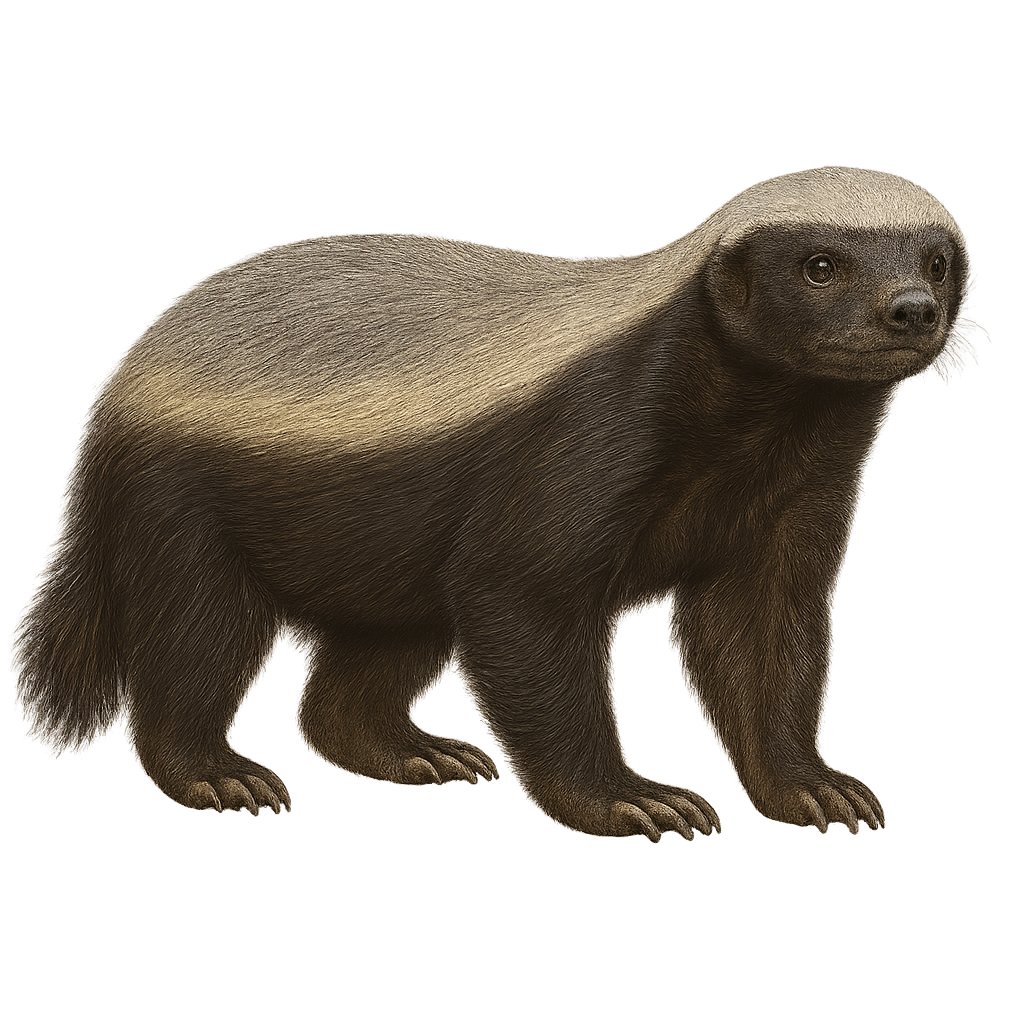Your wildlife photography guide.
Explore the honey badger in detail, study its behavior, prepare your shots.
Where to observe and photograph the honey badger in the wild
Learn where and when to spot the honey badger in the wild, how to identify the species based on distinctive features, and what natural environments it inhabits. The WildlifePhotographer app offers tailored photography tips that reflect the honey badger’s behavior, helping you capture better wildlife images. Explore the full species profile for key information including description, habitat, active periods, and approach techniques.
Honey Badger
Scientific name: Mellivora capensis

IUCN Status: Least Concern
Family: MUSTELIDAE
Group: Mammals
Sensitivity to human approach: Very shy
Minimum approach distance: 10 m
Rut period: May to July
Gestation: 180-210 jours
Births: November to January
Habitat:
Savannas, forests, grasslands
Activity period :
Mainly active at night, generally discreet during the day.
Identification and description:
The honey badger, Mellivora capensis, is a carnivorous mammal known for its boldness and tenacity. It has a robust body, thick and loose skin that protects it from predators. Its fur is typically black with a white stripe on its back. This opportunistic predator feeds mainly on small animals, insects, and fruits. It is famous for its ability to attack larger prey and withstand bee stings and venomous snake bites. The honey badger is primarily solitary and fiercely defends its territory. It inhabits various environments, from savannas to forests, and can dig quickly to hide or search for food.
Recommended lens:
400 mm – adjust based on distance, desired framing (portrait or habitat), and approach conditions.
Photography tips:
To photograph the honey badger, it is advisable to use a telephoto lens of at least 400 mm to capture detailed images from a safe distance. Since the honey badger is primarily nocturnal, it's best to photograph it early in the morning or late in the afternoon when the light is soft. Be patient and discreet to avoid scaring it away. Use a tripod to stabilize your camera, especially in low-light conditions. Focus on natural reserves where honey badgers are known to be present and always respect local conservation rules.
The WildlifePhotographer App is coming soon!
Be the first to explore the best nature spots, track rutting seasons, log your observations, and observe more wildlife.
Already 1 431 wildlife lovers subscribed worldwide

